A Survival Guide for CTOs: Answering Essential Questions For Every Startup
May 04, 2020
We are living in extraordinary times and every member of the global startup ecosystem has been impacted in no small way by the extraordinary working conditions dictated by a global pandemic. One of the many, many challenges we face today involves mapping lessons from life before lockdown to this new reality.
There is not a single startup that has been unaffected by the COVID-19 pandemic. Microsoft for Startups is providing a list of vital resources for startups under the hashtag #StrongerTogether. To access this list which is being curated and updated on an ongoing basis, click here.
Today, Microsoft for Startups is delighted to partner with Techstars to help provide valuable information for the startup, investor, and entrepreneur communities.
We reached out to a diverse group of Microsoft for Startups CTOs and quizzed them on a range of subjects to see if we can apply what we think we know about the way startups tend to run to the way things are having to work now.
Don’t forget to register for our AMA on Monday May 11 at 8:00 am PST to continue this conversation. When you register, you can send us your questions ahead of the AMA and join us live for a lively discussion.
Click here to register for the AMA.
Key Takeaways
In case you don’t have time to read further, here are some of the key takeaways our panel surfaced.
· Always be scaling. Your business, your product, your team.
· Flexibility matters. Your role as CTO will change over time. Stay nimble.
· Flexibility matters, part II. The market may change, your product may change, your business model may change. Stay nimble.
· Never forget that the people you work with are human. This is truer than ever in times of crisis. Be understanding, be thoughtful and be kind.
Our Panel





Andrew Harvey in Australia
Dr. Ian McDonald in the UK
Penina Weiss in Israel
Rong Yu in China
Vinayak Hegde in India
MfS: Thank you so much everybody for taking part today. We have a few questions that we’d love to get your perspectives on.
Let’s start relatively early in the journey of a startup. What are some common technical problems startup CTOs face in the growth phase?
Andrew: Knowing when to break up your monolith is hard. Monoliths work early on as we're understanding how our domain maps to our architecture. As we scale, our monolith starts holding us back and we must think about services. Ideally this is before breaking point – either organizationally or technically.
Split too early and your abstractions will be wrong and your architecture too complicated for your stage. Too late and you're rebuilding the aircraft mid-flight with one engine on fire.
Ian: The most common problems are around scaling to cope with rapid growth while ensuring that the system remains reliable. Another common issue is making sure that the system is secure, particularly when selling into corporate customers.
Penina: Cloud costs – when scale grows, cloud costs grow. Now that is not surprising, but it does surface two issues:
First, the ability to predict those costs. There are different tools for that (e.g., Cost Management in Azure) and this is the time for CTOs to sync with Sales to understand the customer pipeline. Second, is when startups understand that their cloud costs can be high relative to revenue. At this stage there is an effort to reevaluate the architecture and design and see if there are ways to reduce that cost.
Rong: Common technical problems surround the elasticity and scalability of the infrastructure. Startups need the ability to understand customer problems and fix them quickly.
Vinayak: The most common problems that startup CTOs face in startups in growth in two categories – People and technology. First, the architecture needs to be changed to reorient itself for the next level of growth. That means new solutions, component rewrites and some consolidation and streamlining of codebase.
On the people side, making the right hires with requisite amount of experience as well training the current team for next level of challenges and reconfiguring the team to support the new architecture.
MfS: Thanks! Next question. As my company scales, how will my role change and what skills do I need to grow with the company?
Ian: There's two things that change as things grow. First of all you become less hands on and perhaps do no coding instead of lots, and secondly you start to focus on hiring and developing people.
Vinayak: Hiring and growing existing people is one the most critical challenges. The role is similar to a captain of ship, but the size of the ship is growing rapidly while sailing in more turbulent waters. The role becomes more strategic and less tactical as the company grows and your mindset needs to change from solving issues yourself, to creating capabilities, structures and teams to solve them.
Andrew: A startup CTO wears all the technical hats until you can hire people to give them away to. You must choose which hats you want to keep wearing. As the company grows, your role will necessarily pivot. You may not be managing people, but you'll definitely be leading them.
This is a skill set which is neglected in technical people. Hit the books (I recommend The Manager's Path by Camille Fournier) and find yourself coaches and mentors to keep you growing.
Penina: At first the CTO is the main developer and writes most of the code. With time, the team grows and the CTO finds herself moving to a more supervisory and then advisory role where others take ownership of coding, reviewing code and ramping up new engineers.
At this stage CTOs are required to focus more on aspects such as building a team, building a culture and people management, something they may not have experience with.
Over time, a CTO should stop, look at what they are currently doing and make a decision about where they want to be and what they want to focus on and surface it with their founders.
Rong: As the company scales, the CTO spends less time solving technical problems and more time scaling the team and instilling common values. CTOs need to develop skills around hiring talent, managing/coaching people, and ensuring good team culture.
MfS: So you all mentioned expanding the team and hiring talent. How do you know when it’s time to grow your team?
Penina: Well, the problem is that you have to decide on it before you really need it. Hiring takes time and ramping up new engineers also doesn’t happen overnight.
Some startups at a certain stage move to “always-hire mode” which means, they don’t dry out their pipeline and always continue to interview, with lower intensity, to catch the very top engineers when they come their way.
Rong: When you are managing more than 20 people directly and there are still always more problems than you and the team can fix, you should start thinking about building out the team.
Vinayak: When you find you are missing specific skillsets, such as network operations or devops or DBA.
Ian: If you're not able to do all that you want, you should be adding people until the finance side says stop!
Andrew: If you have the cashflow to support it, you should be thinking about growing your team early. If you're only thinking about hiring when your team is already stretched thin, you're behind the game. Adding new team members will be a net drain on productivity as you onboard them.
MfS: When should I consider adjusting my product map, and when should I stick to the plan?
Vinayak: The product roadmap should have the right amount of exploratory features that can be grown to optimize product performance and feature set to appeal to a specific customer cohort. “Right” is highly dependent on context and product strategy. So is timing (the “when?”).
Andrew: Your product roadmap is a work of fiction. That doesn't mean you shouldn't have one, but hold it loosely and use it to understand dependencies and options rather than tablets of stone which must be adhered to.
This can be hard for non-technical co-founders to understand, but as you consolidate product-market fit, it's unlikely that you'll be able to accurately predict what the business will require in three, let alone 12 months.
Rong: The key thing is you have some North star goals defined that align with your mission and vision. You should stay focused on these goals and not pivot often. The product map is more like an execution plan to get you to the goals. I would suggest you review your product roadmap regularly (e.g., every quarter) and make necessary adjustments to adapt to the external changes like market shift, competition, etc.
MfS: As a loose rule, how much time should CTOs spend on innovation versus execution?
Ian: You should work to your own strengths here, and make sure to hire people who complement you so that both innovation and execution are covered well.
Penina: This is hard to answer as it also depends on the product. For some companies, innovation is their IP and hence most of their efforts are at the start, while in later stages they invest more in building the “wrapper” and the product around it. In other cases, innovations such as introducing AI capabilities comes later after the core product is working and bringing revenue.
Vinayak: As a CTO, the amount of time spent on execution should be inverse to the team’s size. But this is also highly dependent on the skillset of the CTO. Sometimes it is better to bring someone else on as CTO while the current CTO takes the role of Chief Architect if the focus is more on execution as the team grows.
MfS: Thank you all so much for your thoughtful and valuable advice. Finally, what advice do you have for CTOs dealing with the extraordinary working conditions everyone is currently under?
Vinayak: Other than the obvious—cut your cost and optimize your cloud usage—I would say it is a good time to address your accrued technical debt as well.
Rong: This is a super challenging time for everyone, but it may also suggest new opportunities. I would suggest startup CTOs talk more with customers and market experts to learn the pains/struggles and think deeply about how they can pivot to use technologies to solve the pains. This is also probably the best time to develop skills, tools, best practices for remote working across the team. This will benefit the team in the long run.
Penina: The role of the CTO here is not only to see how their team continues and delivers but to care more than before about the wellbeing of their employees and invest in building and maintaining the sense of team and culture they had.
Also to see that expectations are adjusted to the situation of each employee. We are seeing single people giving 150% capacity these days, while some parents with small children find themselves at less than 100%. Both groups need attention. Some need to ease down and take breaks, so they don’t burn out, others need support and to feel appreciated, so they aren’t wracked with guilt and self doubt.
After you take care of your employees, don’t forget you are also an employee and it is OK for you to “lose it” sometimes as well!
Ian: You lead by example here, so make sure that you show people how to have balance and relax some of the time too. Also do realize that working long hours every day and the weekend has been shown not to be always necessary. You should look at how you work and see if you can improve this.
Andrew: Remember that the people on your team are human. You should remember this all the time, but there’s a higher likelihood than normal that external factors are affecting performance. Always assume that people are trying their best, and get curious when things go awry, rather than reaching for blame.
This article was originally published on the Microsoft for Startups blog.

